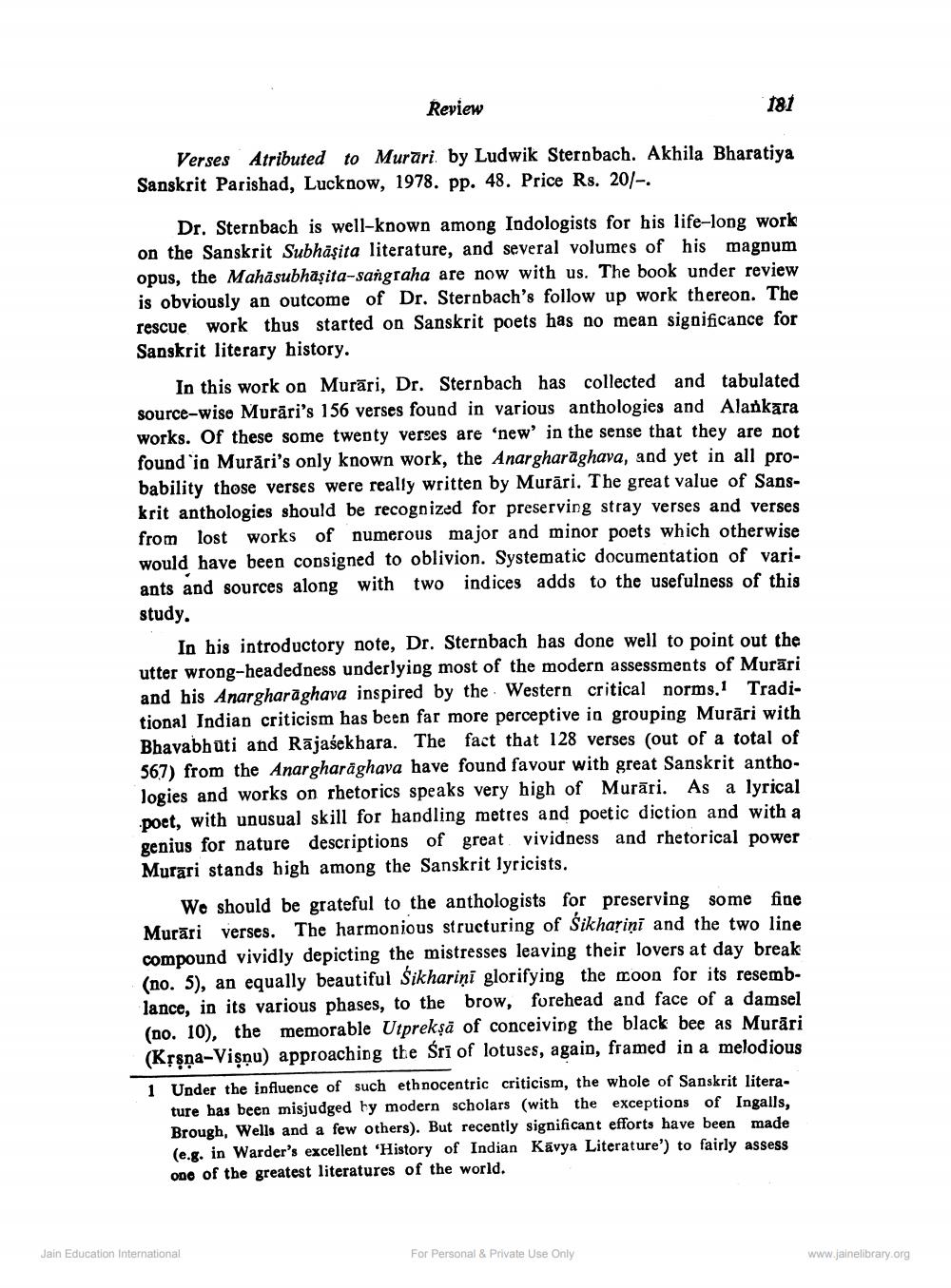________________
Review
Verses Atributed to Murari by Ludwik Sternbach. Akhila Bharatiya Sanskrit Parishad, Lucknow, 1978. pp. 48. Price Rs. 20/-.
181
Dr. Sternbach is well-known among Indologists for his life-long work on the Sanskrit Subhäşita literature, and several volumes of his magnum opus, the Mahāsubhāṣita-sangraha are now with us. The book under review is obviously an outcome of Dr. Sternbach's follow up work thereon. The rescue work thus started on Sanskrit poets has no mean significance for Sanskrit literary history.
In this work on Muräri, Dr. Sternbach has collected and tabulated source-wise Muräri's 156 verses found in various anthologies and Alankara works. Of these some twenty verses are 'new' in the sense that they are not found in Murari's only known work, the Anargharaghava, and yet in all probability those verses were really written by Murari. The great value of Sanskrit anthologies should be recognized for preserving stray verses and verses. from lost works of numerous major and minor poets which otherwise would have been consigned to oblivion. Systematic documentation of variants and sources along with two indices adds to the usefulness of this study.
In his introductory note, Dr. Sternbach has done well to point out the utter wrong-headedness underlying most of the modern assessments of Murări and his Anargharaghava inspired by the Western critical norms, Traditional Indian criticism has been far more perceptive in grouping Murari with Bhavabhuti and Rajasekhara. The fact that 128 verses (out of a total of 567) from the Anargharaghava have found favour with great Sanskrit anthoa lyrical logies and works on rhetorics speaks very high of Murari. As poet, with unusual skill for handling metres and poetic diction and with a genius for nature descriptions of great vividness and rhetorical power Murari stands high among the Sanskrit lyricists.
We should be grateful to the anthologists for preserving some Murări verses. The harmonious structuring of Sikharini and the two line compound vividly depicting the mistresses leaving their lovers at day break (no. 5), an equally beautiful Sikharini glorifying the moon for its resemblance, in its various phases, to the brow, forehead and face of a damsel (no. 10), the memorable Utpreksa of conceiving the black bee as Murări (Krana-Visnu) approaching the Sri of lotuses, again, framed in a melodious
Jain Education International
1 Under the influence of such ethnocentric criticism, the whole of Sanskrit literature has been misjudged by modern scholars (with the exceptions of Ingalls, Brough, Wells and a few others). But recently significant efforts have been made (e.g. in Warder's excellent 'History of Indian Kavya Literature') to fairly assess one of the greatest literatures of the world.
For Personal & Private Use Only
www.jainelibrary.org




